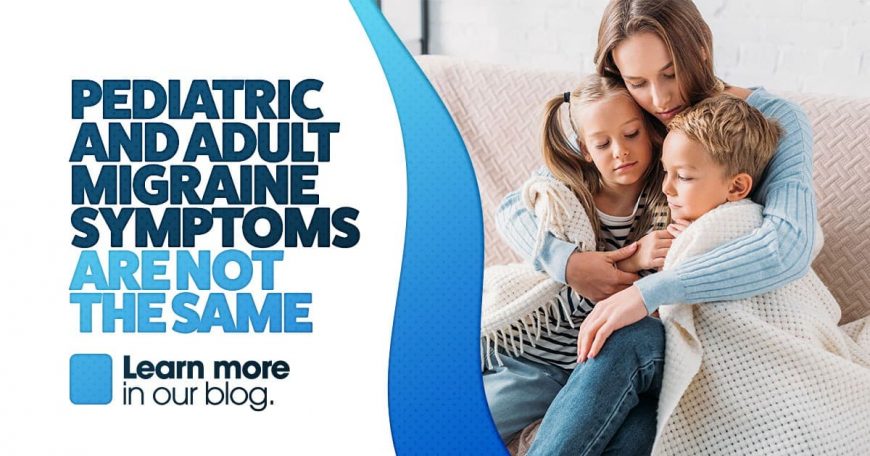
The National Headache Foundation estimates that around 5% of children will experience a migraine by the age of 10. However, pediatric migraines often go undiagnosed because children cannot fully communicate their symptoms. Pediatric and adult migraine symptoms do differ, and we’re going to show you how.
Adults Vs. Kids Migraine Symptoms
Light and sound sensitivity are common in adults with migraines. Children can also experience the same but may have trouble describing it. Instead, they may put on sunglasses or earplugs or go to a dark, quiet room. Children with migraines often experience vertigo, abdominal pain, and sensitivity to odors more than adults. They also have more involuntary symptoms such as:
- Forehead and facial sweating or flushing
- Eye redness or tearing
- Runny nose or congestion
- Swelling around the eye
- Drooping eyelid
Phase Symptoms Difference
In general, migraines last a significantly less amount of time in children. Moreover, the location of the headache pain is also different in children. They feel pain on both sides of their heads or across their foreheads. Adults typically experience headache pain on one side of the head. During the different phases of a migraine, the differences between adults and kids include:
- Pre-headache: Both children and adults commonly experience mood changes like irritability. However, a child may also appear paler or develop undereye shadows. In contrast, adults report more stomach issues such as diarrhea or constipation and muscle stiffness, fatigue, and yawning.
- Aura: A child may have difficulty recognizing or reporting visual disturbances such as zig-zag lines, bright spots, or flashing lights.
- Headache: Though a child may not verbalize it, the throbbing pain of a pediatric migraine is moderate to severe. Your child may stop eating or playing, cry a lot, or have temper tantrums.
- Post-headache: The symptoms individuals experience following a migraine is called the postdrome, or post-headache phase. Adults report fatigue, weakness, mood changes, stiff neck, difficulties concentrating, or dizziness. Kids most commonly feel the following:
- Thirst
- Sleepiness
- Vision changes
- Food cravings
- Numbness and tingling sensations
- Eye pain
Recognizing how a pediatric migraine differs from an adult migraine is critical in proper diagnosis and learning how to manage this lifelong condition. ActivMed Practices & Research have several adult and pediatric studies enrolling at our Lawrence, MA location.

To learn more, call us at (978) 655-7155, or visit our website today!
Sources:
https://www.verywellhealth.com/pediatric-migraines-4178789https://americanmigrainefoundation.org/resource-library/pediatric-migraine/
